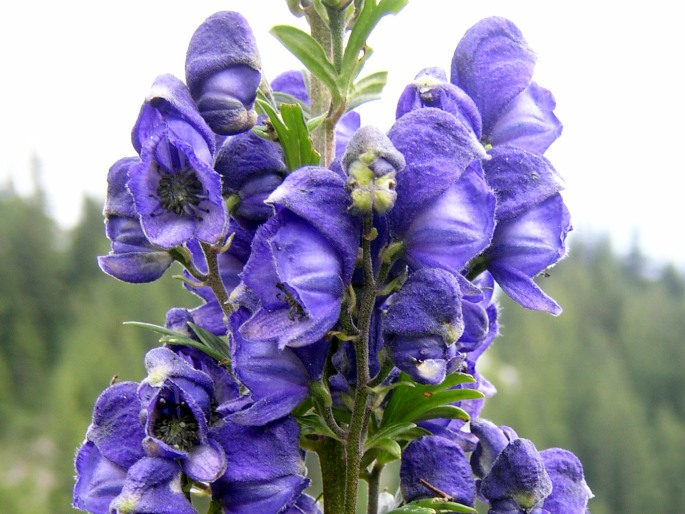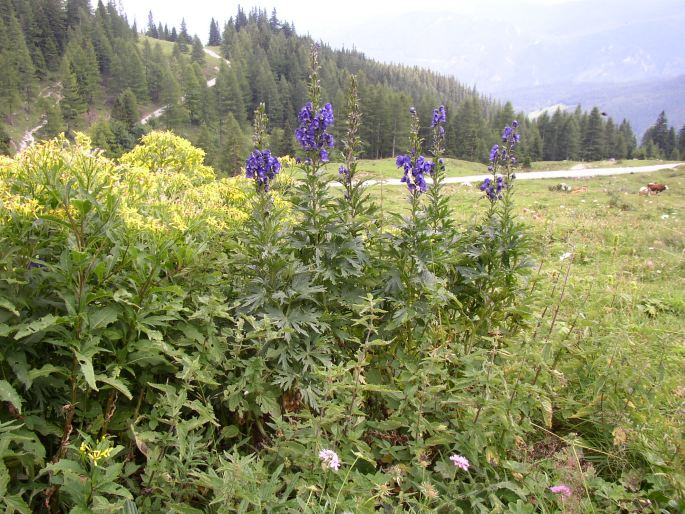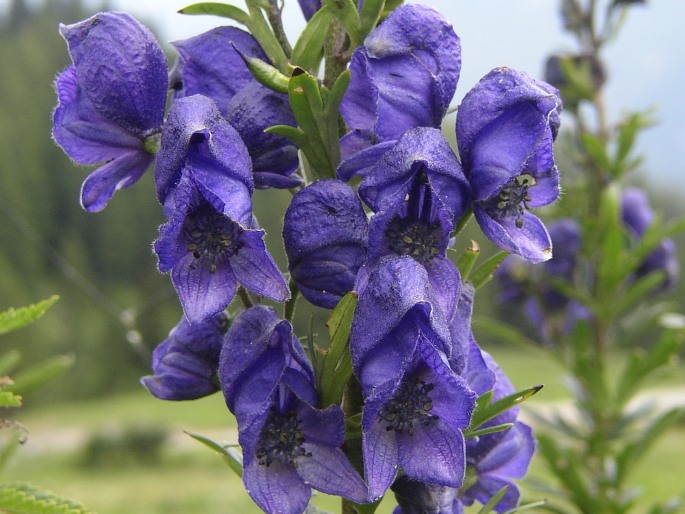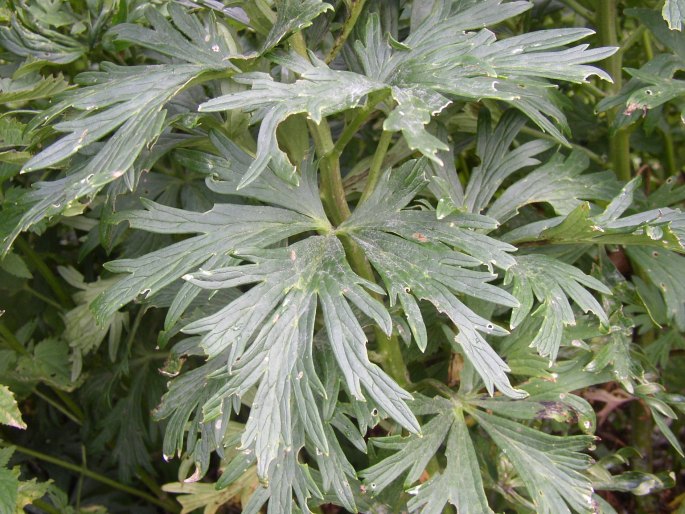Syn.: Aconitum pyramidale Mill., Aconitum strictum Bernh. ex DC., Delphinium napellus (L.) Baill.
Family: Ranunculaceae Juss.

Distribution: Western Europe and the Alps, eastward it extends to the mountains of the Balkan Peninsula and to the Southern Carpathians. It was introduced to eastern part of North America. It is a very variable species in which numerous local variants have been recognized as species, subspecies or varieties.
Ecology: It grows in mountain meadows, on margins of pastures and forests, in mountainous areas. It blooms from June to October.

Description: Perennial herbs, 30–150(–200) cm tall. Stem erect, in upper part branched. Leaves alternate, petiolate, divided to the base, segments divided to half-way or more to the midrib, lobes linear or linear-lanceolate, 1–8 mm wide. Flowers in a terminal raceme, inflorescence branched, 10–30 cm long, with eglandular hairs or glabrous, perianth-segments 5, petaloid, dark blue to violet-blue, helmet not more than twice as high as wide, hemispherical, 18–25(–30) × 11–18 mm, nectary-spurs straight. The fruits are usually 3 follicles.
Note: This species, like other species of the genus Aconitum, is a very poisonous plant.




These images were taken in Austria, Raxalpe (August 18, 2004).


